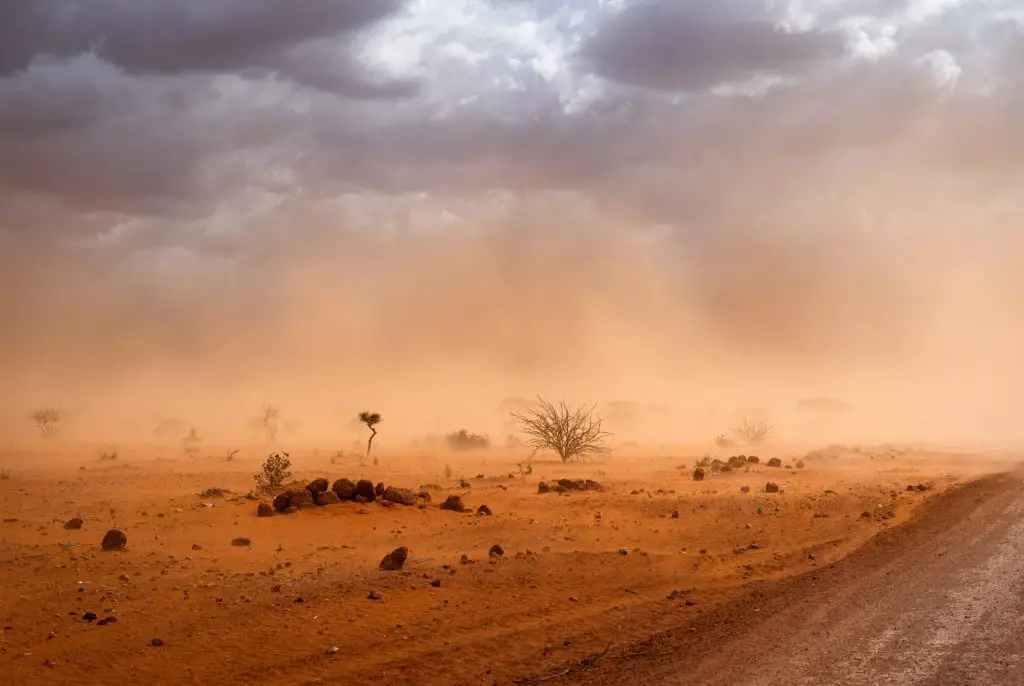Africa’s food crisis
Conflict, climatic shocks such as droughts in East Africa and low average rainfalls in West Africa, a massive increase in displaced persons, and skyrocketing fuel and food prices have all exacerbated the region’s enormous demands. Many impacted nations are also struggling from the economic consequences of the COVID-19 outbreak, further aggravating matters.
Read: Ensuring Africa’s food security by adopting climate-smart techniques
These effects are the indelible signs of Africa’s food crisis. According to current Food and Agriculture Organization (FAO) and African Union assessments, the food crisis has affected an estimated 346 million people in Africa.
The worrying food crisis in Africa will intensify in the coming months. Rain-fed agricultural production has almost completely failed in Africa in recent years. Many farmers have had to abandon agriculture and relocate to large cities in pursuit of alternate livelihoods.
Malnutrition rates are growing due to declining purchasing power and inadequate access to healthcare and healthy diets. These high malnutrition rates are evident in Kenya, the Central African Republic, and Somalia.
Agriculture production helps to support many livelihoods in Africa. Despite their significant responsibilities, many farmers’ current farming techniques endanger the environment, sustainable agricultural output, and agro-ecosystems health and operational capability. In other words, hostile ecosystem farming methods produce a state that renders agricultural output expensive, trapping future generations in a vicious poverty cycle, with the rural poor suffering the most.
The relationship between agriculture and nature in Africa
Both food and nature are critical to Africa’s future. Natural capital accounts for up to 50% of total wealth in most African nations, and up to 70% of the African population relies on nature for a living. Unsustainable farming methods are already the greatest danger to Africa’s natural wealth. Yet, there is an urgent need to boost food security since Africa is home to two-thirds of the world’s chronically food insecure people.
Although Africa is expected to have 60% of the world’s remaining arable land, moving into it poses several new environmental risks. As the world’s and regions’ populations rise, this land will be at the frontline of the conflict between short-term food production and long-term investment in natural capital.
It is not only about generating more food to support a more significant population but also about producing it differently and better. Instead of competition between conservation and agriculture, Africa requires a food economy that prioritizes people and the environment.
Read: KEPSA brings Expo to Nairobi for SMEs to learn Best Practices
Re-thinking the future of Africa’s food security
One of the most critical concerns Africa has is providing healthy and nutritious food for people. Africa is now a net food importer, importing approximately $10-15 billion more agricultural products than it exports. However, every $1 billion spent on food imports equals a yearly income of 334,000 agricultural families. This comprises 670,000 on-farm employment and 200,000 off-farm jobs. The growing dependence on food imports contributes to food insecurity, unemployment, and rural poverty, with one in every five Africans going hungry.
Find the right balance.
Bringing additional land into agricultural output, whether due to degradation or a desire to enhance production area, has its own set of challenges. Agricultural growth often happens on terrain less suitable for cultivation and more subject to degradation, endangering productivity gains prematurely.
Likewise, expansion commonly results in losing crucial habitats, fracturing ecosystems, interrupting wildlife mobility, and jeopardizing highly valued ecosystem services. These interfere with pollinators, carbon sequestration, and water retention, subverting long-term agricultural productivity and aggravating the human-wildlife conflict.
Landscape-based techniques, such as shifting from maximizing productivity at the cost of the environment to farming with biodiversity to accomplish nature-positive productivity at scale, are the only options to improve agricultural production while protecting nature and reducing climate change.
Landscape techniques offer a framework for integrating multiple land use over broad geographical scales. These techniques remain especially relevant in Africa’s biodiversity-rich agroecosystems, where people, animals, environment, and agriculture intersect.
In summary, landscape techniques promote practices and policies that benefit environmental and human health. It also makes it easier to invest in essential components of a sustainable agricultural system, such as healthy drinking water, excellent sanitation, education, gender equality, and small-scale farmers’ access to finance.
A shared responsibility to ensure Africa thrives.
Changes in the global food chain provide essential opportunities to enhance the profile of integrated thinking in Africa. Because these measures will benefit the whole planet, a collective responsibility remains necessary. Landscape-based initiatives and the scaling out of agro-ecological systems and restorative agriculture must be prioritized by African member states.
There should be cross-border collaborations in critical landscapes. Non-African partners and enterprises must also invest in regional systems strategies, focusing on yield and advancing all ecological systems. As investment in Africa’s agricultural industry grows, steps must be taken to avoid negative environmental consequences.
Everyone wants to live in a world with a healthy planet and people and planet. In Africa, this means people with access to healthy diets, economic growth, and development possibilities while interacting with the continent’s unique natural environments.
The farming techniques used in the agro-ecosystem impact health and long-term agricultural productivity. Thus, if agricultural productivity is to be sustainable, it is vital to encourage farmers to utilize ecosystem-friendly techniques. The move necessitates the identification of crucial success elements.
Meeting these objectives will need collaborative action. The world is currently undertaking a green rebound from the pandemic. Therefore, Africans have a unique chance to guarantee that the continent will flourish by the decade’s end.
Now is the moment to re-establish Africa’s link with nature to feed the continent while conserving the environment. Now is the time in Africa to reimagine, refresh, and redesign agriculture for a brighter future.











